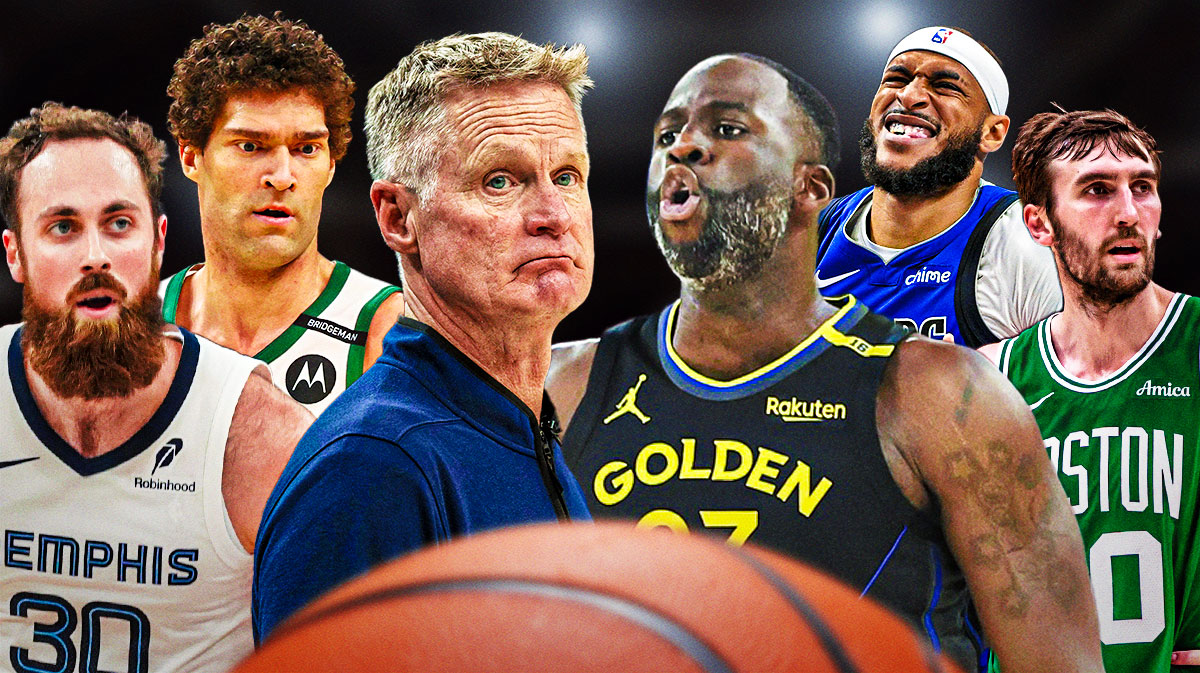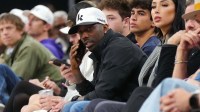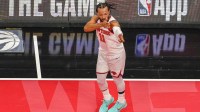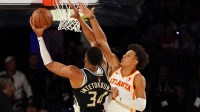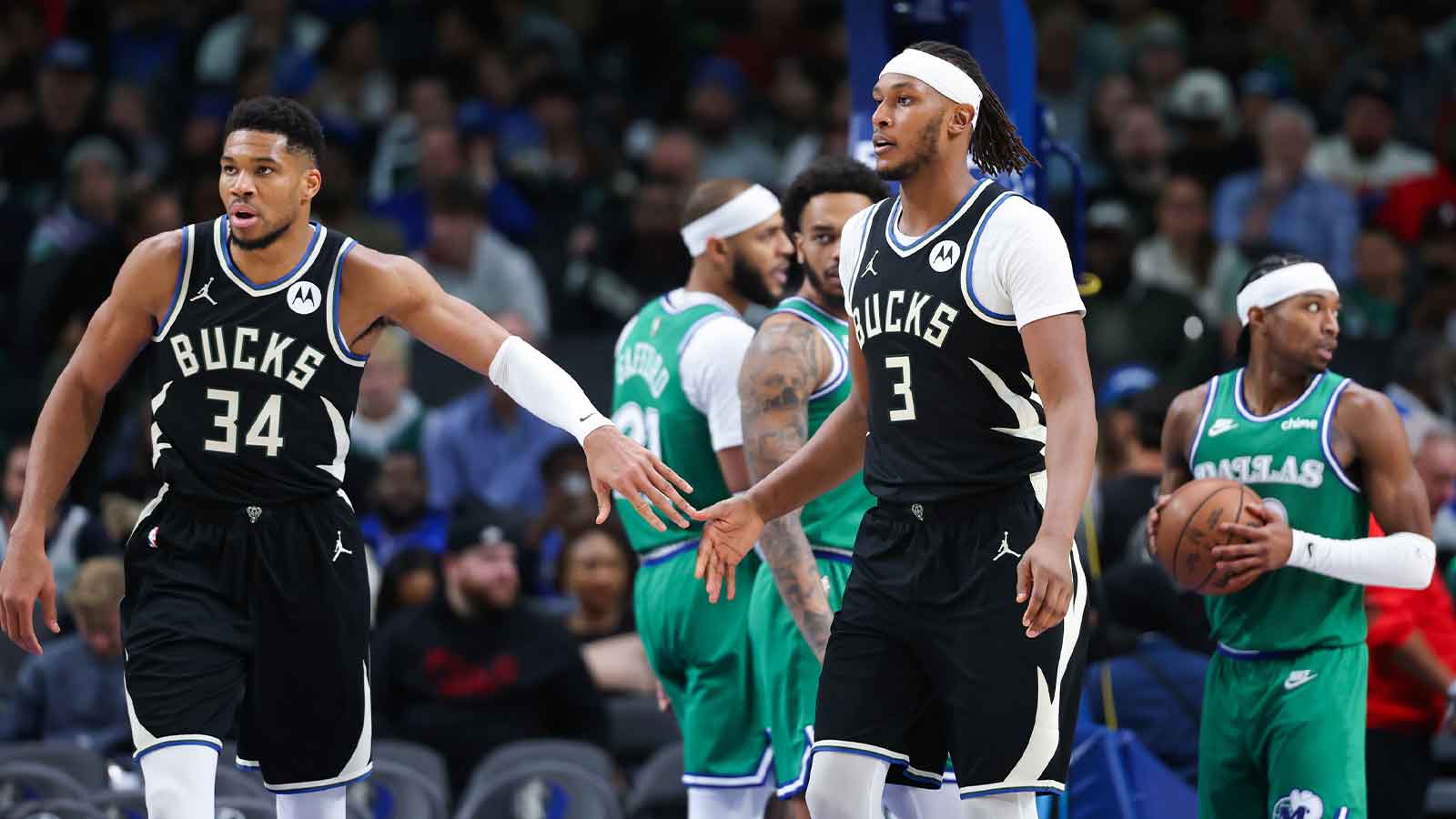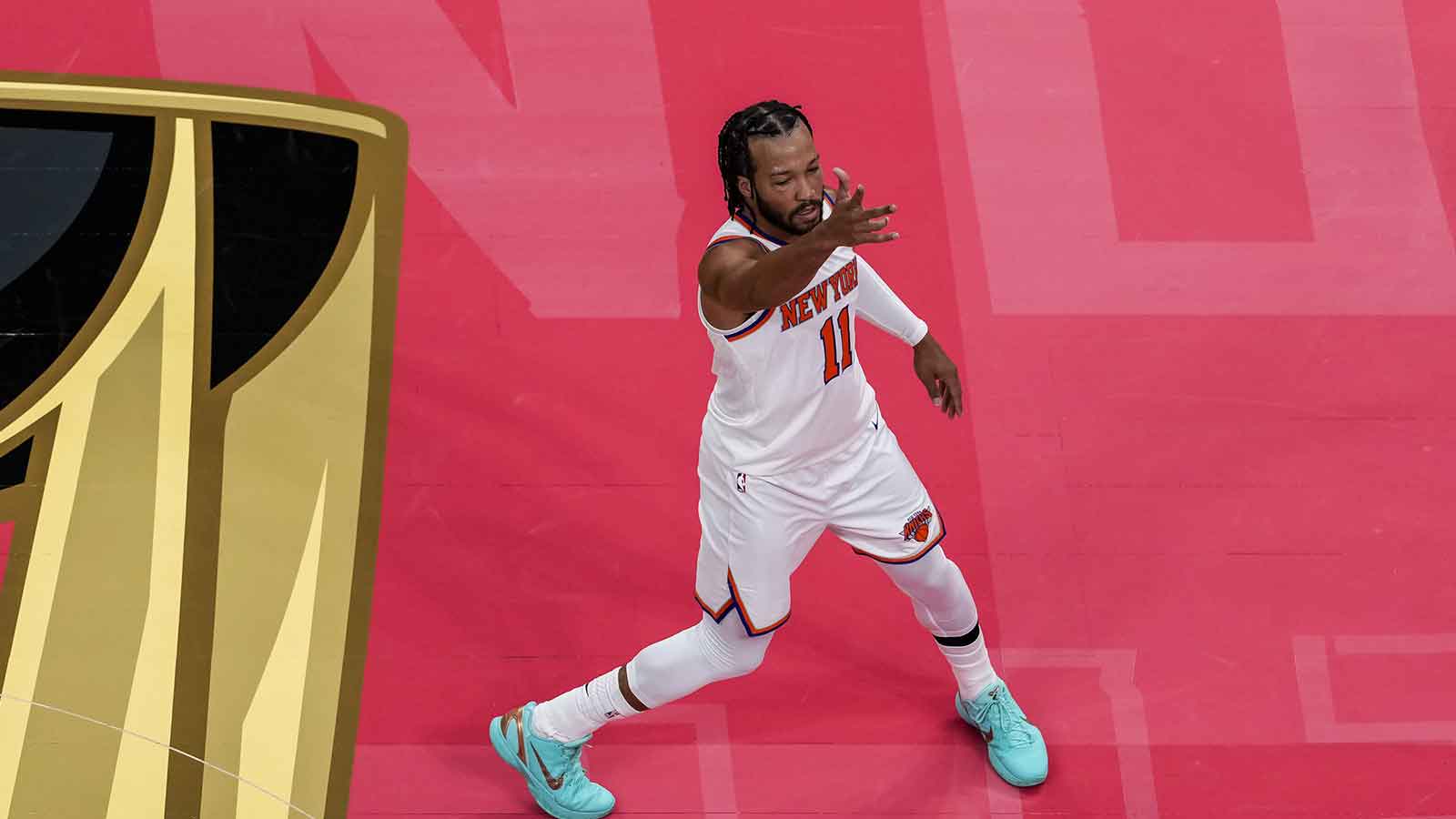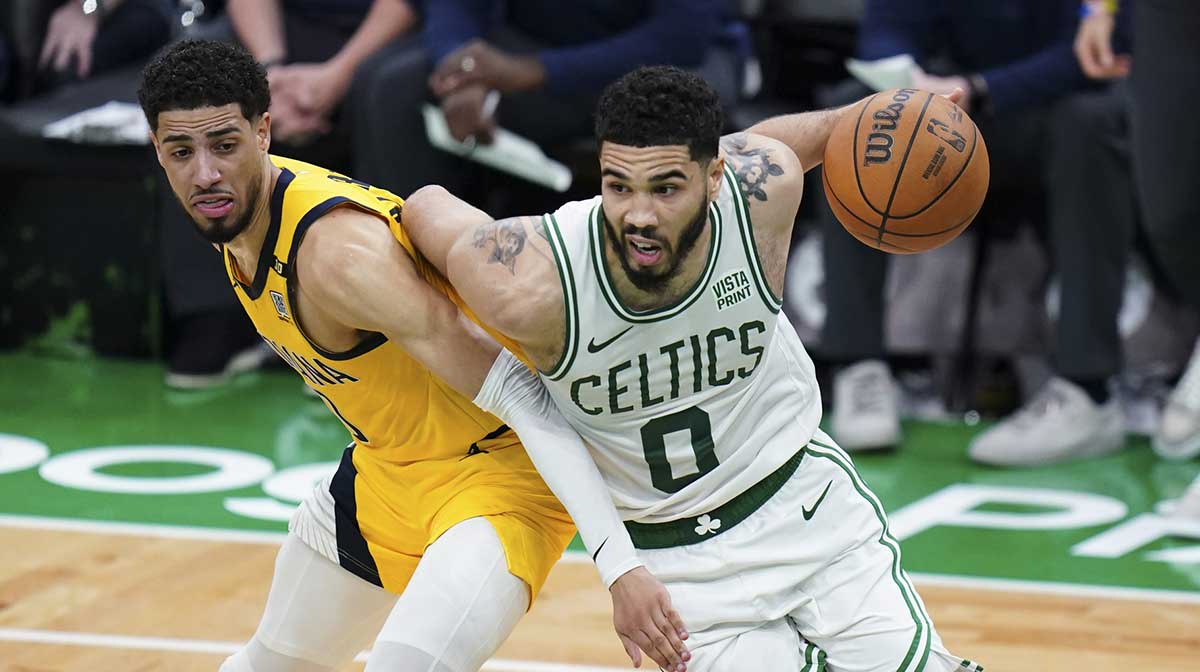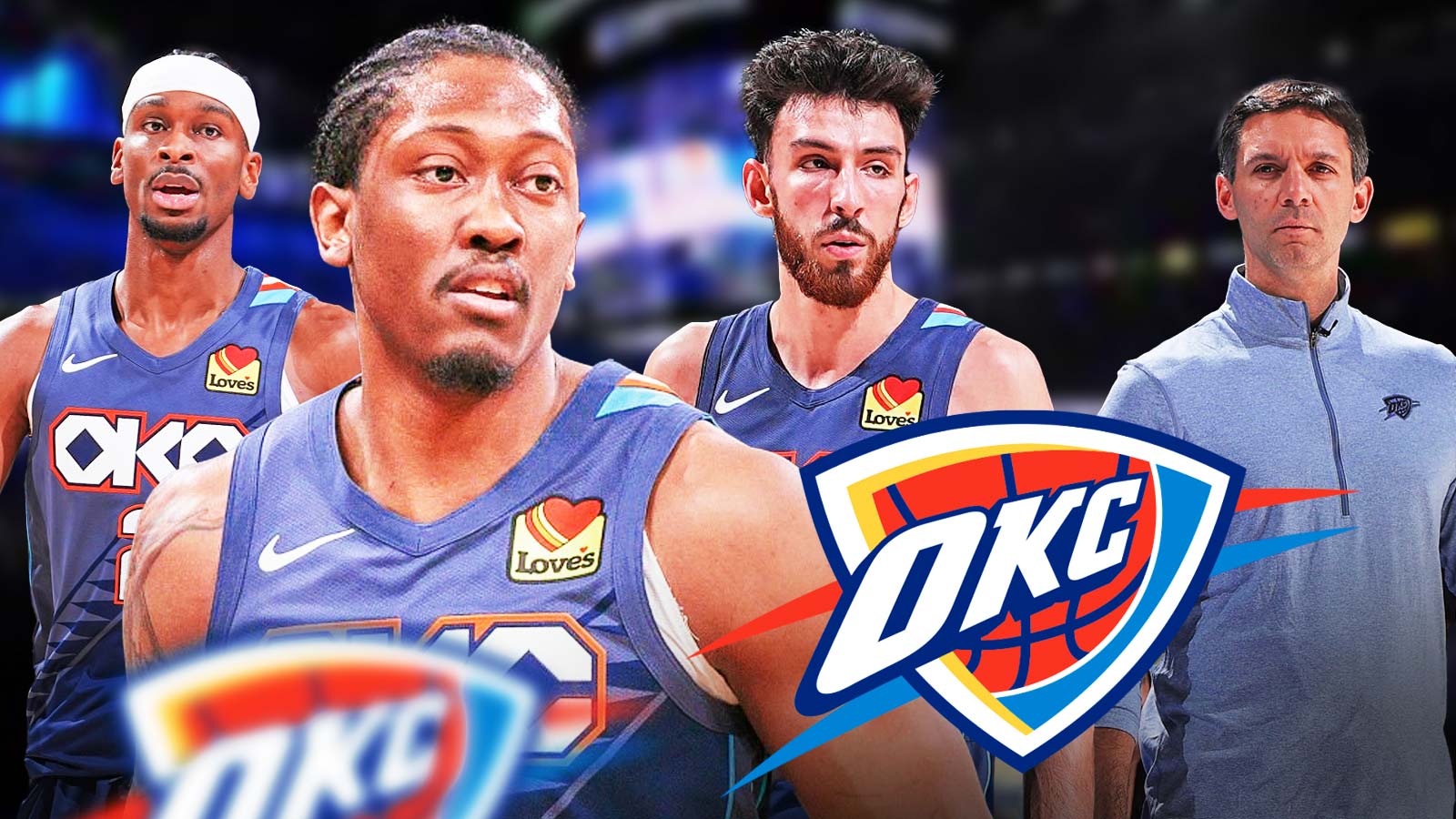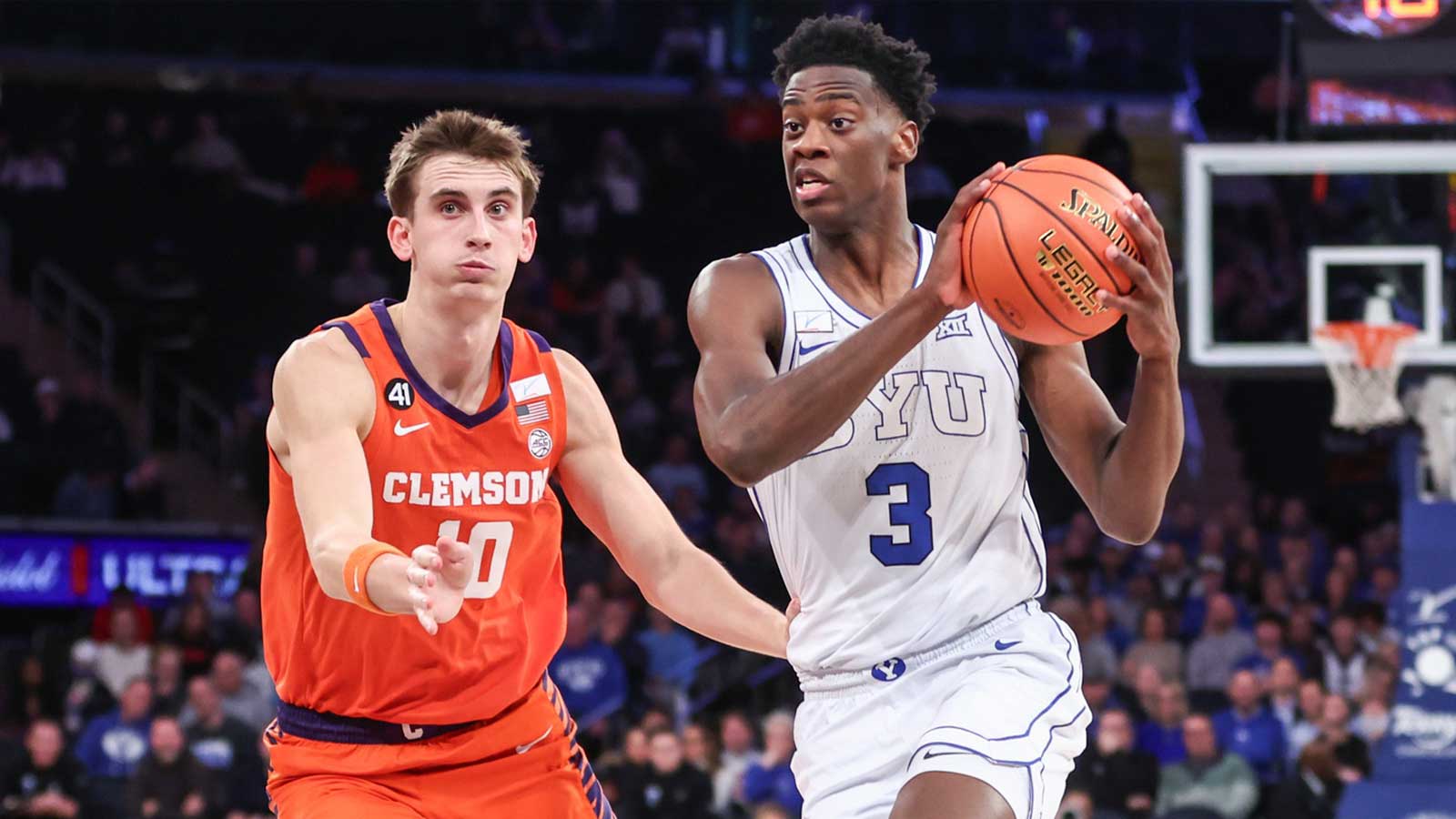A perfect fit at center for the Golden State Warriors is hard to come by. Bigs who warp the court on both ends by splashing jumpers from beyond the arc and swatting shots at the rim are skeleton keys in the modern NBA, unlocking more lineup configurations and stylistic flexibility that make the game much easier on their coaches and teammates, especially in the playoffs.
But players who fit that archetype remain extremely rare, not to mention highly valued by their incumbent teams. Victor Wembanyama and Chet Holmgren became foundational building blocks for the San Antonio Spurs and Oklahoma City Thunder the moment the teams drafted them.
The subject of trade rumors for half a decade or more, Myles Turner is now playing an indispensable role on the Indiana Pacers' run to the NBA Finals.
It's no wonder why the Boston Celtics and Milwaukee Bucks are hesitant to part with Kristaps Porzingis and Brook Lopez this summer despite unenviable long-term circumstances surrounding Jayson Tatum's injury and Giannis Antetokounmpo's pending trade request.
By now, every team in basketball understands the all-encompassing benefits of a five-man who truly stretches the floor while simultaneously patrolling the paint. No contender needs one more than the Dubs, though, whose longtime efforts to bring in that type of player next to Draymond Green have apparently reached a new fervor as the offseason approaches.
Golden State is firmly in the market for a starting center ahead of 2025-26, layered complications of sliding both Green and Jimmy Butler up a spot in the lineup be damned.
Unfortunately for Mike Dunleavy Jr. and the font office, Golden State's means of adding a difference-making five—let alone one who consistently spaces the floor and protects the rim—this summer are limited.
Turner, whose status on the trade block would immediately tip off a frenzied bidding war, isn't going anywhere as Indiana eyes the Larry O'Brien Trophy. The Celtics could look to move on from Porzingis, but the Warriors couldn't facilitate a potential trade for him without including Green or Butler in the deal as matching salary.
Though ending Jonathan Kuminga's time in the Bay would free up cap room, centers cut from the cloth Golden State wants are worth more than the $14.1 million midlevel exception. Retaining Kuminga would leave the $5.7 million taxpayer's midlevel as Dunleavy's best tool of spending in free agency, not even a third of what most starting centers are paid today.
A star big man definitely isn't coming to San Francisco. Cross Turner and Porzingis off the list of plausible options. The same goes for Luke Kornet, a Celtics fan favorite primed to re-sign in Boston. Steven Adams would be too expensive for the Dubs if he decided to leave the Houston Rockets.
It'd be short-sighted for the front office to waste the little maneuverability it has over the offseason on a center who can't stay healthy, a la Rob Williams III.
Fellow Portland Trail Blazers center DeAndre Ayton doesn't make sense from both salary-cap and on-court perspectives. Could Steve Kerr really stomach playing an imminent defensive liability like Nikola Vucevic major minutes?
There is no time left to be too picky. Stephen Curry's championship window is close to completely shut, and the Warriors have made it abundantly clear since falling to the Minnesota Timberwolves that adding a center is their highest offseason priority.
Quentin Post won't be the only full-time five in Kerr's regular rotation next season. Who joins him and, ultimately, in what capacity will loom very large for Golden State's hopes of leveling up toward true title contention in 2025-26.
With what promises to be a wild NBA offseason just a few weeks away, let's rank the Warriors' realistic potential targets at center.
- Honorable mention: Karlo Matkovic, New Orleans Pelicans; Goga Bitadze, Orlando Magic; Larry Nance Jr., Atlanta Hawks (FA); Chris Boucher, Toronto Raptors (FA); Isaiah Jackson, Indiana Pacers (RFA)
5. Jay Huff, Grizzlies
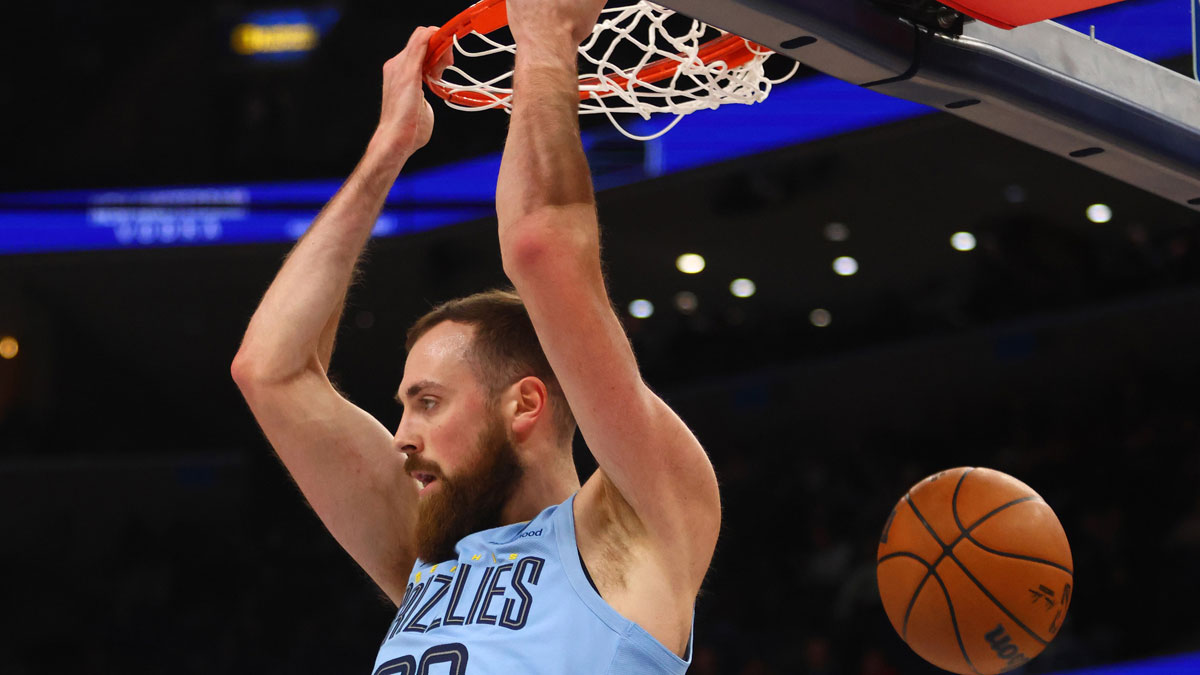
The Memphis Grizzlies would be fools to part ways with Jay Huff following his breakout 2024-25 campaign. A below-average rebounder who’s a better weakside shot-blocker than every down intimidator on the back line, his blend of dynamic three-point shooting, high-flying finishing and innate rim-protecting chops remains valuable, nonetheless.
The former undrafted free agent reverted back to deep reserve with the Grizzlies upon Taylor Jenkins’ dismissal, even falling behind journeymen midseason pickups Marvin Bagley III and Lamar Stephens in the rotation as new Grizzlies head coach Tuomas Iisalo searched for answers against Oklahoma City in the first round of the playoffs.
Memphis, shrewdly, inked Huff to a bargain four-year contract in late October, days after he began the season on a two-way.
It’d take a trade to bring him to San Francisco, and negotiations between the Dubs and Grizz could summarily fall apart given the former’s dearth of future second-round picks and latter’s expectation of a worthwhile haul in return for a cheap backup center signed through 2027-28.
Don't forget that Huff’s minimum salary also makes him readily gettable for Golden State, though. If the powers that be want him with the Warriors, there’s definitely an offer Dunleavy could make that would be tough for Memphis to turn down.
4. Day'Ron Sharpe, Nets (restricted free agent)
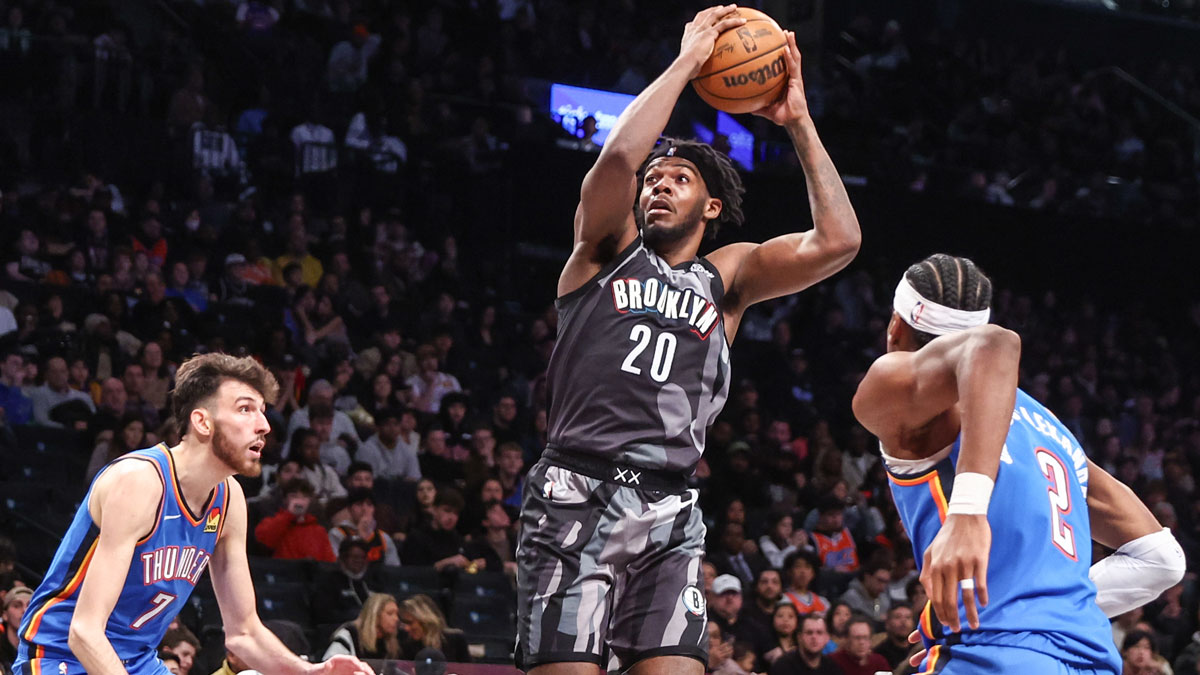
Day'Ron Sharpe is of particular interest to Golden State due to the position of his incumbent team entering the offseason.
Reeling after their first trip to the lottery since rebuilding yielded the No. 8 overall pick in the 2025 NBA Draft, the Nets could be especially thirsty to bring in a young player of Kuminga's plausible star power.
Just as significant here is that Brooklyn's currently the only team in basketball with the requisite cap space to sign Kuminga to the $30 million starting salary he's liable to seek in restricted free agency.
Base-year compensation rules complicate sign-and-trades involving restricted free agents, but Dunleavy and Nets general manager Sean Marks could surely iron out the necessary details if there's mutual interest for Sharpe and Kuminga on the other side.
At 6'10, 265 pounds, Sharpe is one of the NBA's preeminent rebounders—huge for a Warriors team primed to finish 15th out of 16 teams in playoff defensive rebounding rate.
Just a so-so rim-protector for now, he was still one of only six players in the league last season—joining ultra-disruptive bigs like Jonathan Isaac and Mitchell Robinson—with a steal rate above 2.0 and block rate above. 4.5, per research conducted at Stathead.
Sharpe, 23, is only just coming into his own offensively. He flashed budding three-point range in 2024-25 on low volume and has enough pop to finish lobs with authority when afforded space to load up.
Impressive rookie coach Jordi Fernandez gave Sharpe the reins as a dribble hand-off operator in elbow and delay sets, too, resulting in the big man posting a career-best 16.8 assist percentage, nearly three points better than Looney's high-water mark with the Dubs.
Just the latent stability of a jack-of-all-trades five-man would be a major boon for Golden State. Sharpe needs a bit more seasoning against quality competition to earn that distinction, but there's also a world in which it doesn't do his ultimate ceiling justice.
Why wouldn't the Warriors gauge Sharpe's interest in a multiyear deal slightly less lucrative than those recently paid to Onyeka Okongwu and Wendell Carter Jr., then call up the Nets to talk a double sign-and-trade with Kuminga? The specter of cap gymnastics and further first-apron restrictions, irrespective of Kuminga's inclusion, certainly shouldn't keep Dunleavy from targeting Brooklyn's young big.
3. Al Horford, Celtics (free agent)

The ripples of Jayson Tatum's ruptured Achilles will be widespread in Boston. Cutting ties with Al Horford before he's ready to call it quits could be a particularly depressing one.
Horford let it slip after his alma mater won the NCAA Tournament that he's looking forward to sharing the court with Florida star Walter Clayton Jr., a surefire first-round pick. He's not done yet.
But his time with the Boston Celtics might be despite lasting mutual admiration with Horford likely less inclined to return on a one-year minimum if Brad Stevens opts for a gap year in immediate wake of Tatum's injury.
At his peak, it would be difficult to dream up an impact starting center who smooths out more of Golden State's rough edges than Horford. The Atlanta Hawks also drafted him two years before Curry and finally started to look his age in 2024-25 and relies more on mobility and twitch for effectiveness than a fellow millennial center who's already been tied to the Dubs.
Golden State may not have to weigh the risk of Horford continuing to hang on physically as his 40th birthday approaches this time next year. He'd be taking a discount to team up with Curry, Green and Butler—the same one available where Horford and his family have made home in Boston. Rest assured Tatum is privately telling him to be ready to join him for a playoff run in 2026.
Horford's ever-present versatility and the stylistic flexibility he'd help unlock with Golden State, even after turning 39 in early June, is too enticing for the front office not to go after him in free agency anyway.
The Dubs' missing piece to true title contention is unattainable whether or not it actually exists. Horford's not that type of player anymore but still among a small handful of targets up front who's easily envisioned as part of this team's championship puzzle.
2. Brook Lopez, Bucks (free agent)
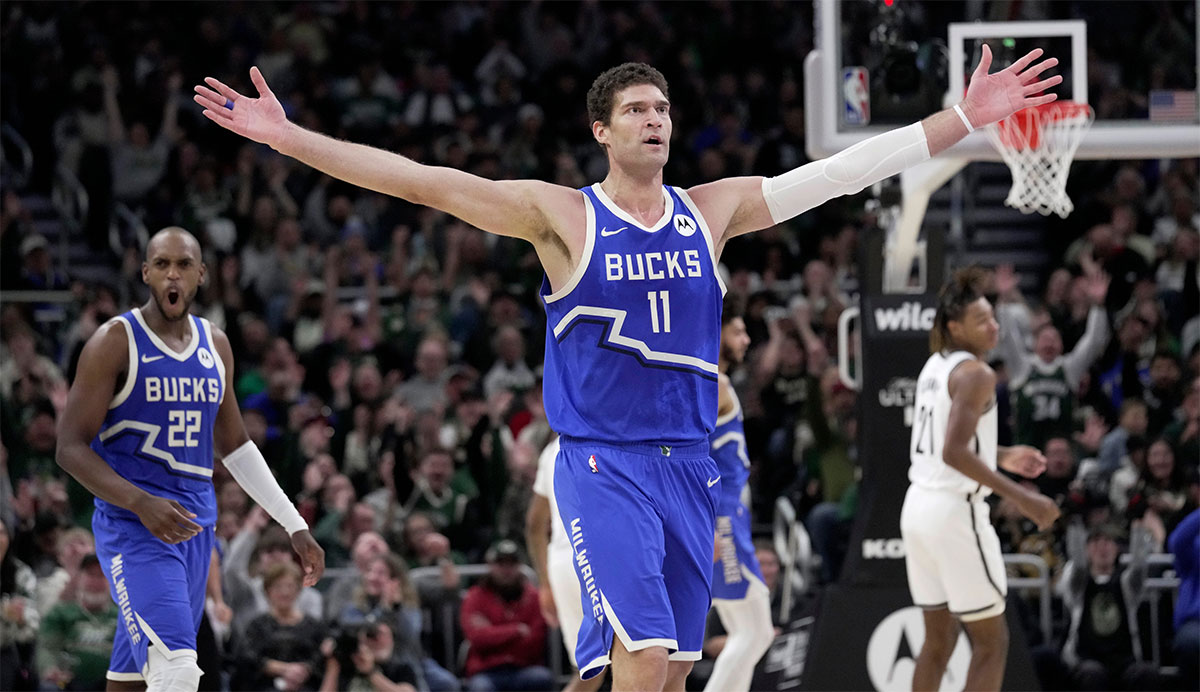
The writing isn't even on the wall in Milwaukee anymore. It's a headline on the NBA's front page now with Giannis Antetokounmpo meeting with Milwaukee Bucks personnel soon to address his future after Damian Lillard tore his Achilles, and they went home early from the playoffs once again.
Antetokounmpo holds the keys to Milwaukee's potential fire sale, but Lopez is almost surely on his way out even if the two-time MVP bucks expectations to continue his career where it started. The question Golden State needs to answer before going after Splash Mountain in free agency is just how much his ongoing decline factored into the Bucks' precipitous downfall.
No prospective free agent has been linked more often to a team of late than Lopez has to the Warriors. It's easy to see why. Father Time isn't coming for Lopez's size. And he's been basketball's premier combination of rim-protection and deep three-point shooting since signing with Milwaukee off the bi-annual exception scrap heap in the summer of 2018.
That was seven years ago now. The massive frame that helped Lopez bomb 30-foot triples on one end while rejecting all-comers at the rim on the other during his Bucks heyday began sapping him of already limited mobility and explosion before 2024-25.
Opposing players shot 58.8% on Lopez at the rim this season, per NBA.com/stats, a league-average mark that's over five points worse than his previous high in Milwaukee.
He managed 6.9 of those restricted-area challenges per game, down from 9.1 the season prior despite getting slightly more playing time. Lopez's rate of blocks and rebounds dipped for the second season running, too.
At least some of that statistical decline defensively is due to the Bucks' substandard perimeter personnel and frequent team-wide lapses of engagement and execution. Lopez would no doubt be a more consistent defensive presence in Golden State, playing with elite communicators like Green and Butler.
Then again, the Warriors don't currently have the dogged point-of-attack defenders needed to fight hard around screens, crucial to maximizing Lopez's effectiveness in drop coverage—the only pick-and-roll scheme suited for his plodding nature.
Actually signing Lopez, unfortunately, won't be as easy for the Warriors as choosing to look past sustained trends of age-related decline. He'll command at least the $14.1 million non-taxpayer's midlevel exception on the open market, a team-building tool only available to the front office if Joe Lacob gives Dunleavy the green light to move on from Kuminga.
At 37, Lopez's career is nearing the end of its final chapter. He was born and raised in California, then played two years at Stanford before the New Jersey Nets selected him with the 10th overall pick of the 2008 NBA Draft.
With over $220 million in career earnings, might Lopez consider taking a discount, two-year deal in San Francisco, chasing championships with Curry, Green, Butler and Kerr for the next couple seasons before finally retiring?
Tough as it is for fans to swallow, that's definitely his most likely path to Golden State before 2025-26. The Warriors, shocker, aren't the only team with title aspirations who would love to find out if Lopez can revert back to the supreme impact player he was two or three years ago.
1. Daniel Gafford, Mavericks
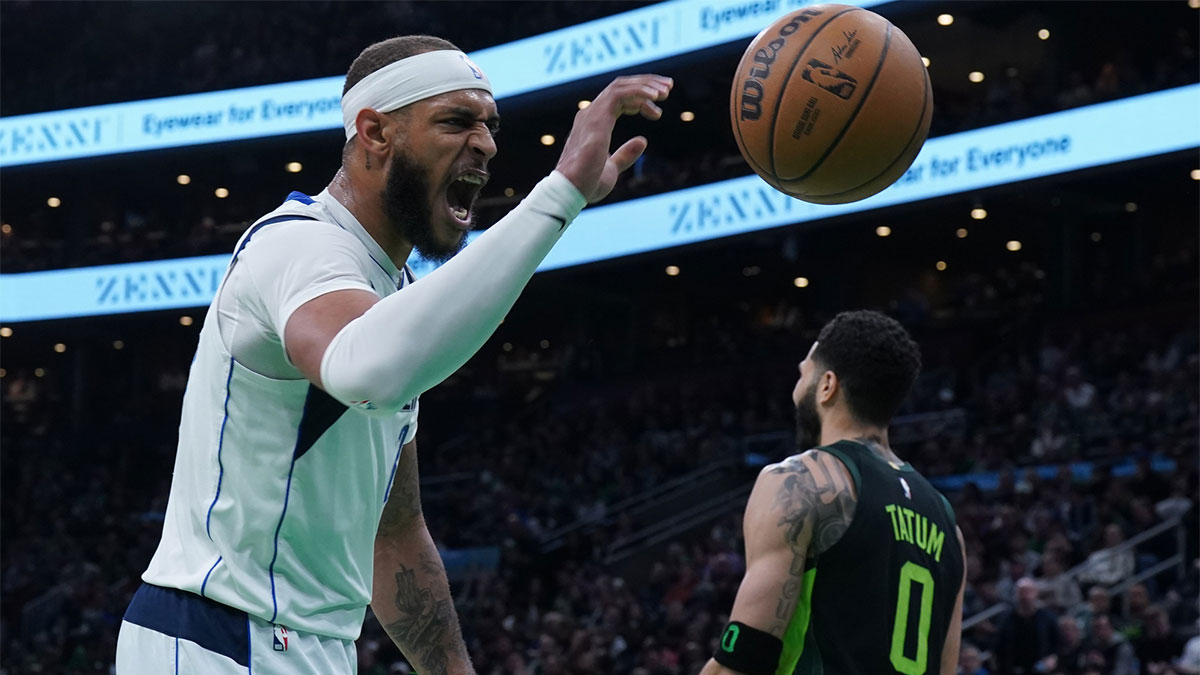
Gafford's shooting range barely extends past how far away from the rim he can dunk. You don't want him putting the ball on the floor more than once and definitely not making high-level reads with the ball when defenses trap pick-and-rolls.
The prescribed playmaking Kerr loves from his bigs falls outside Gafford's realm of qualifications. He shouldn't be switching unless the shot clock is almost buzzing, and he's hardly airtight when it comes to back-line help rotations and the angles he takes defending ball screens.
There's a case for Gafford's game is less flexible than that of any other center the Warriors should be chasing. Why is the Mavericks center here at all, then, let alone at the top of the list? This team's biggest collective weakness is any semblance of explosiveness on the interior, and he provides as much of it as any big in the NBA.
Gafford also could be readily available via trade. Even if Dallas tries to force square pegs into round holes by starting Cooper Flagg and Anthony Davis next to Dereck Lively, Jason Kidd will still have a major logjam on the front line.
Nico Harrison might not be a “rational actor,” but he must understand why prioritizing PJ Washington as the Mavs' first frontcourt player off the bench makes more sense in the modern NBA than Gafford…right?
Regardless, the parameters of Gafford's contract should ensure Golden State reaches out to Dallas. He'll earn the relative thrift-store price of $13.4 million next season before hitting free agency again after 2026-27.
The Warriors could easily match his salary in a trade this summer before watching Gafford walk away two years from now, hitting what amounts to full reset mode as Curry, Green, Butler and Kerr call quits on their Hall of Fame careers.
A package of Brandin Podziemski and Kevon Looney in exchange for Gafford plugs holes, answers questions and fits timelines for both sides.
Lacob loves Podziemski so much that he might be off the table in any trade that doesn’t return a star, but at least Kerr’s disappointment could be held in check by bringing back De’Anthony Melton on a minimum. It’s high time the Dubs split their surplus of off-guards.
Gafford, it bears stressing, embodies the best outcome of a rough situation for Golden State. He would be no panacea for what plagued the Warriors on either end in the playoffs, and trading Podziemski so early in his career really could come back to bite them.
A far more distressing risk that’s imperative franchise higher-ups realize? Wasting another season of what could be Curry's last as a title team's best player on a future without him that’s bound to start in the NBA wilderness.
Gafford allowed ridiculous 47.5% shooting at the basket last season, per NBA.com/stats, second-best in the league among high-frequency rim-protectors behind Chet Holmgren. He shot over 70% from the field for the third year in a row, an especially eye-popping number considering most of Gafford's games were without Luka Doncic throwing him lobs.
Gafford's offensive rebound percentage spiked to a solid career-high of 14.1, too, and the Mavs grabbed an additional 5.5% of their own misses with him on the floor, per Cleaning the Glass, in the 94th percentile league-wide.
Golden State's identity, obviously, is wholly unique and fully ingrained. Why shouldn't the Dubs supplement it with a paint force like Gafford, addressing the sweeping size issue that plagued them against Houston and Minnesota while also taking a page from surprise postseason impact provided by bigs like Adams and Mitchell Robinson?
Throw out any related stylistic concerns. The prospect of teaming Curry with an elite vertical spacer and Green an elite rim-protector supersedes them, potentially giving this team the extra dynamic it needs to compete at the top of the league.

